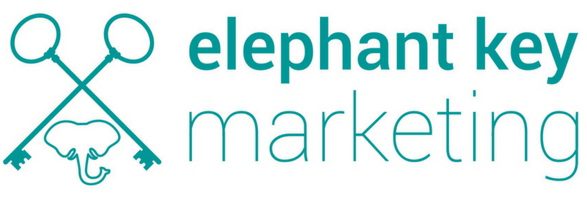
So you want to get all social-y, you have fun ideas for content and your hashtags are next level. That’s amazing! Here’s the next question: WHERE are you going to post your content? True, quick story: one of my clients told me one time that they didn’t really like Facebook, so they never used it for their business. While I get that personal comfort level and affinity for different sites does matter, here’s the truth, boo boo: it’s still not about you.
Not all platforms are created equal. So which one you want to use depends on a few factors to consider, such as which platforms support your preferred media, which social networks reflect your brand and business as a whole, and, most importantly, where your target market is. I don’t recommend leaning in on LinkedIn for your clothing brand, and you’re also probably not going to get many executive job candidates from Snapchat.
Here’s the deal: there are like 350 social networking sites out there, and we all have day jobs (mine of which is technically being on the sites, but let’s not get technical right now). So in the interest of time, I’m going to cut to the chase and give you the quick run down on the top six social media sites, some key stats for each, bonus features, and best use practices.
While I was writing this post, I realized that I had enough info for two separate blog posts. So to save your sanity, that’s exactly what I did.
Ready for part 1?
(in a Mario voice) Here we gooooooooo!
Facebook
Know how our parents all say they don’t have a favorite child, but we all secretly suspect that they do? I’m saying it here: I have a favorite child, and that favorite child is Facebook*. That being said, while it’s great for MOST business, it’s not right for every single one.
Here’s what you need to know:
User Demos
2.27 billion monthly users who are slightly more female than male, the majority of which are between the ages of 18-49 and many of whom have some college education.
Pros:
- Breaks barriers of age, gender, race, socioeconomics and lifestyles, and its adoption rate is enormous
- Is compatible with many automation tools such as Buffer and Hootsuite
- Supports several types of media
- Is very economical for advertising
- Is very business-friendly
Cons:
- Can be frustrating to collect analytics (28 days? Really? Is this a Cillian Murphy zombie flick or my marketing stats?)
- Can be clunky to set up the business page
- Has a healthy business use, meaning standing out is difficult
- Doesn’t provide much support unless you advertise
*Note: I’m not claiming to have invented Facebook. Hope that’s clear here. Had I invented Facebook, I would be writing this from my millions of yachts.
Best Uses:
Facebook is fantastic for content that:
- Touches on emotions and personal lives [note: I did NOT say that we only want to post personal info there, you just need to find an angle for the content to make it more relatable to personal life]
- Advertising is amazing here; the only challenge is the inability to target by occupation for B2B
- Leverages the live video function
Provides cohorts or groups with a place to easily share info, ask questions, etc.
Is Messenger-friendly
- Image size (in pixels): 1200 X 630
- Max video length: 45 minutes
LinkedIn
LinkedIn is also clearly one of my favorite social networking sites. It was actually through LinkedIn that I was able to confirm the legitimacy of a job opportunity that lead me to where I am right this very minute. So…. Boom.
User Demos
590 million users equally divided between males and females primarily between the ages of 18 and 56, the majority of which have some college education.
Pros:
- So perfect for B2B that it’s not even funny
- Premium features such as Sales Navigator can really level up your direct sales game
- Advertising can be targeted to very specific professions
- They have a ton of super profesh groups for professional grouping activities
- It’s ubiquitous in the business world
- You can publish articles directly to LI
Cons:
- Analytics can be frustrating to collect (note: this will be a theme; be prepared)
- Corporate pages are difficult to grow
- Advertising is expensive for the average Joe
- Support exists but can be frustrating
- In general, the content can be a little dry (but you can also work to fix that)
Best Uses:
LinkedIn is primed and ready for posting that
- Helps people be better at their job
- Educates, educates, educates!
- Is short and to the point
- Incorporates video (srsly, big opportunity there)
- Leverages the live video function
- Provides a valuable network
- Takes advantage of the InMail internal messaging system
- Image size (in pixels): 1200 X 680
- Max video length: 10 Minutes
Twitter
Described by marking guru, Gary Vee, as the last truly social network, Twitter provides a unique ability to interact across the span of time and location (but not space – at least not yet).
Here’s the 411 on the ol’ Twitter.
User Demos
126 million users who are split evenly between female and male, the majority of which are between the ages of 18-49 and many of whom have some college education.
Pros:
- It’s super easy to connect and engage with your target market
- Everyone is on Twitter
- Analytics are easy peasy to access (YASSS)
- Hashtags make reach a breeze
- It supports some cool media
- Advertising is available, though full disclosure: I have never advertised on Twitter so I have no idea about the experience
Cons:
- The shelf life of a Tweet is super short (think: minutes)
- 280 characters is still not a lot [note to self: work on brevity]
- Reactions and comments are a little limited
- Sometimes people lose their freaking mind on Twitter; it just happens
Best Uses:
Get on Twitter to:
- Engage with others’ content
- Provide channels for outstanding customer service
- Tag experts and brands in curated content
- Share something quick and snappy
- Build your audience awareness
- Image size (in pixels): 1024 X 512
- Max video length: 30 Seconds
I hope this was incredibly helpful for you in understanding three of the biggest social media platforms available to businesses today. The next post is locked and loaded now, so read it here to learn about Pinterest, Instagram and YouTube.



